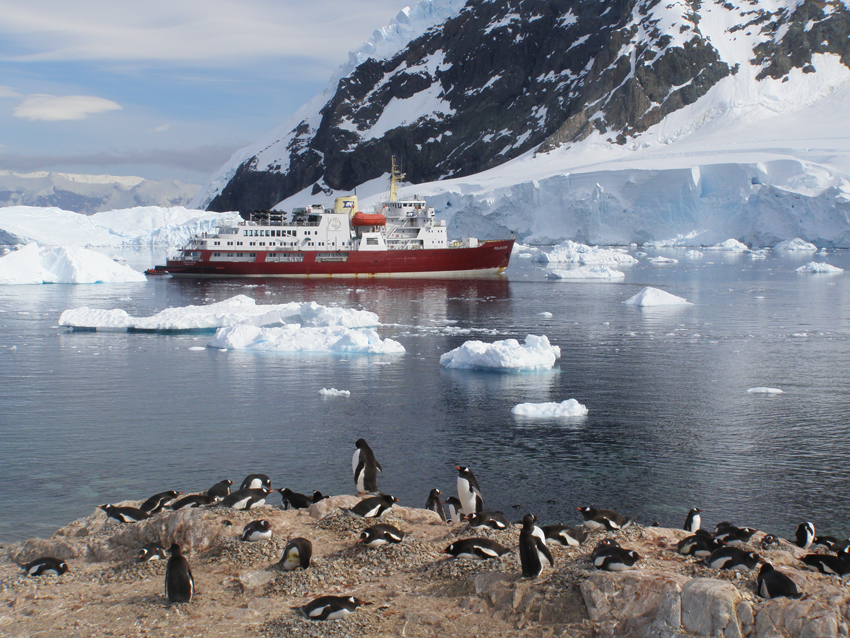Last Updated on April 6, 2023 by PowersToTravel
For our safari in Tanzania, it being my first foray to Africa, I perhaps over-stressed. I worried about the water, the food, disease and balancing my blood sugars.
My worries were for naught, having properly prepared and properly executed the trip.
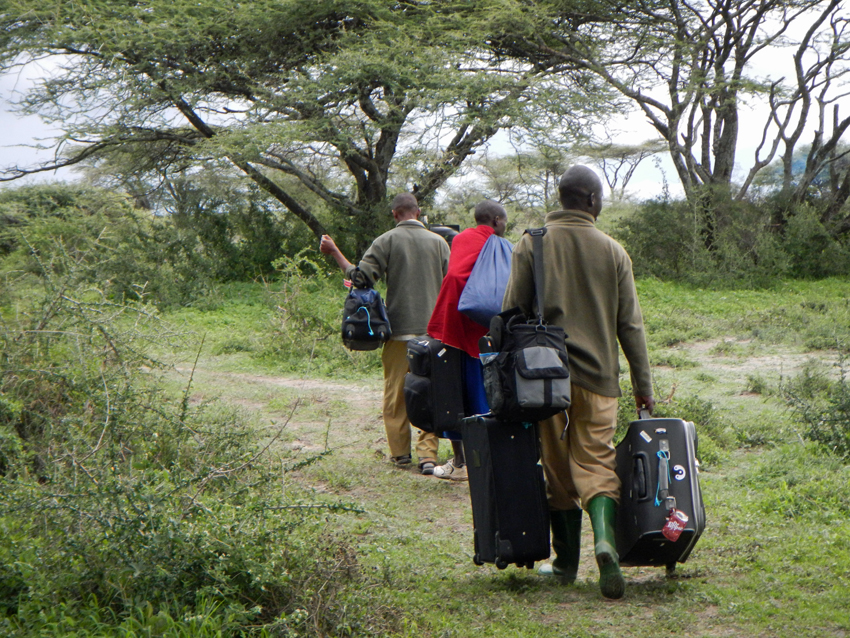
Funny story behind this picture: The first man took the smallest suitcase which was actually the heaviest, the second, the next smallest, which also was heavy, which left the last man to pick up our two large suitcases, which at this point contained almost nothing! I loved the look on his face when he picked up those two empty bags!
Many of the Tanzania travel tips apply to every traveler, not just diabetics. I’ve written a full soup-to-nuts article on Travel Tips for International Travels. Check it out before you continue on. Skip over the diabetic parts if you are not, but there’s plenty of health tips which apply to all travelers.
Vaccines and Travel Clinic – before you go
Even before I committed to our itinerary, I checked the CDC Travel Site for Tanzania. Our trip would be somewhat abbreviated as I had to plan it over my job’s two week Christmas shutdown. Safari was my priority; mountain hiking with potential altitude problems, and Zanzibar with mosquito and sanitation problems, they took a backseat. Maybe someday we will return to experience them, but for this trip, it would be safari only.
I follow the instructions on the CDC site for “most travelers”, and then carefully consider the instructions for “some travelers”. As a diabetic, I have to be aware I may end up in a hospital, so always have to have my Hepatitis B shot up to date, even though “most travelers” don’t need to.
Of course I go to a Travel Clinic if I need any shots or travel medications. The doctor prescribed anti-malaria medication for us.
Level of activity
Our safari adventure did not promise a great deal in the way of exercise. We would be confined to our vehicles for safari for our own protection, and our tents for the evenings. In fact I found it to be more carb-intensive due to the great meals at camp, and the snacking that we did in the vehicles, and more sedentary than expected.
Keeping my insulin cold while traveling
Africa can certainly be a hot place, depending on your location, and spending the whole day out and about means you need to plan your insulin protection wisely. We always travel with a Kooltron travel refrigerator (which plugs into the car and into the hotel room) for the rest of the vacation. Here’s a link to Greg’s Kooltron Diet Dr. Pepper travel refrigerator. We highly recommend it (but receive no compensation for our recommendation.)
In addition, because we traveled in a private safari vehicle, the guide provided his own travel refrigerator which he kept stocked with cold water for us. If we had depended on Mweta’s travel refrigerator for Greg’s Diet Dr. Pepper I think Mweta would not have been pleased, as Mweta relied on the water himself as well. But if we had simply been requiring refrigeration for my insulin I’m sure we would have done perfectly well with just Mweta’s frig for water and insulin.
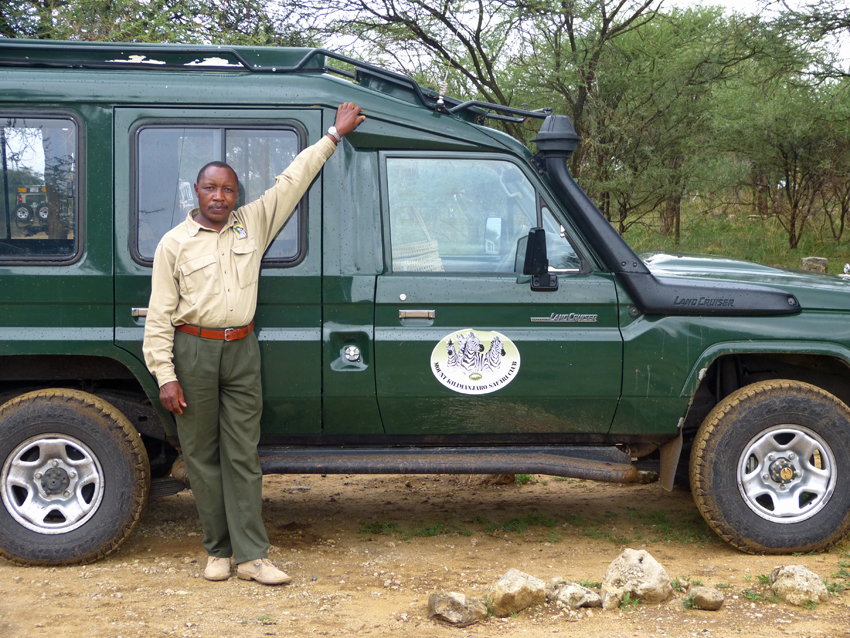
Eating Unusual Foods
I am a picky eater and worried a lot about having enough to eat and about balancing my blood sugars in Africa.
Believe it or not, because I was so worried, and because KLM allowed us to bring two suitcases apiece, I brought an entire soft-sided suitcase full of preserved food – dried apricots, jerky, granola bars, the list goes on.
Greg’s second suitcase was a harder, more structured suitcase which carried his 2 weeks’ supply of Diet Dr. Pepper (it was the first trip in which he carried his supply with him.) There was a little extra space and weight to add in a couple of six packs of Diet Coke bottles for me too!
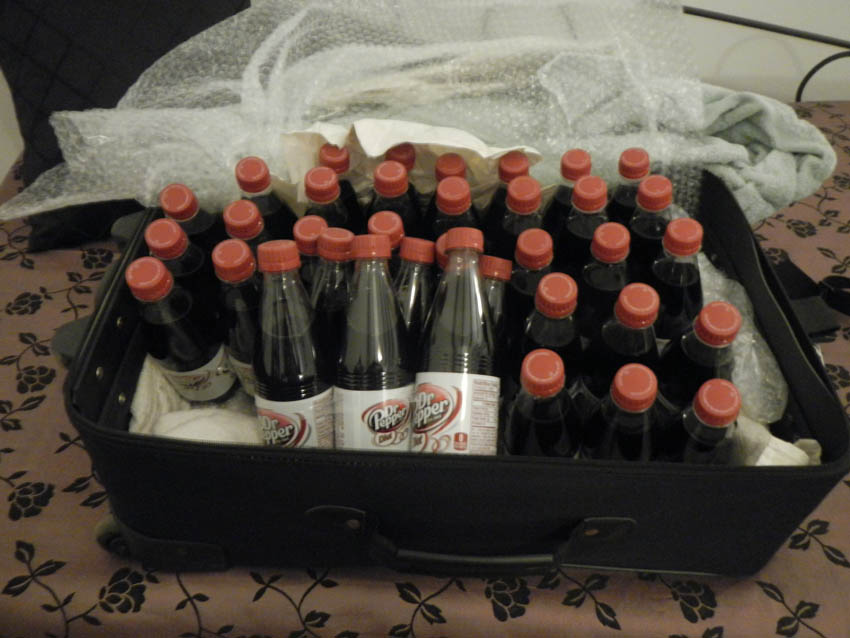
Our guide and driver Mweta was astonished at the amount of luggage two people could bring. We were astonished at how gracefully he managed sorting through the cases each night we arrived at a new camp.
Turns out, the food on safari was much like the food at home. The clientele for a safari in Tanzania is mostly Europeans, with a couple of Americans thrown in. So, the generally three-course meals were suitable for European taste, with the occasional Africa specialty. I didn’t have to worry about highly spiced foods, or strange vegetables. With a minimum of three courses to a meal, if one of the ingredients was not to my taste, I was able to fill up most effectively on the other courses.
We ended up going home with almost as much prepared foods as I brought.
Avoiding the water
Of course, don’t drink the water – drink bottled water only. Mweta always provided plenty of cold bottled water in the safari vehicle.
Protecting my insulin and supplies from theft
Actually for Tanzania there were no worries – during the day we were almost always in the safari vehicle, or if we were not, then Mweta was guarding it. At night we were in our tent.
Coping with the diarrhea and vomiting that occasionally hits
For me, Tanzania was a dream of a lifetime, and I was so happy to find the food so good, so fully cooked, and the bottled water so plentiful. I had no digestive issues at all during the trip.
I do have one story to tell which relates to hygiene in which I feel extremely lucky to have not succumbed to microbes.
We were taken to a Massai village to meet the headman, and buy beaded items from the women. Many people get taken to these villages and it can be a very touristy experience. We felt very lucky that we were taken by our guide to a small village in the Ngorongoro Conservation area that is not set up as a group tourist site. The relationship between the tent camp and the Massai village was such that only guests form the tent camp visit the village, not the large group, drive-by tours.
Our local guide took the two of us to the village where we walked among the huts, went inside, sat with the headman’s wife and talked with her, through an interpreter, about life in New England and life in Tanzania. She had so many questions about how New England woman go through childbirth, and manage their homes. We had questions too about how Massai women cook and raise their children. It was a fascinating visit.
As we left, all the women and children in the village come up to us to sell beadwork. I took pictures of them, and then showed them themselves in the view screen. Their hands were all over me and my camera. Flies were just everywhere. I did feel overwhelmed by the potential for germs.
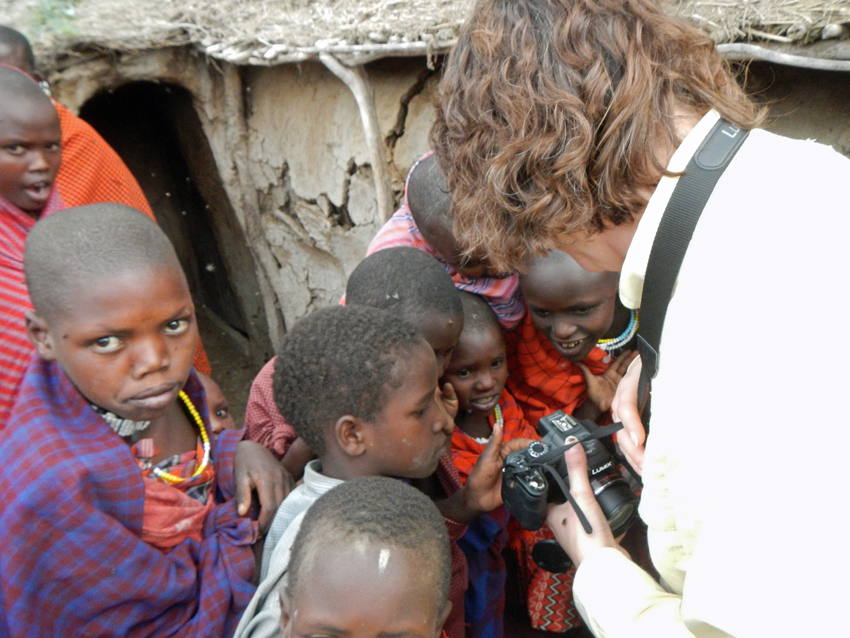
When we returned to the tent camp I stripped off all my clothes and put them in the dirty cloths bag, and hand-washed every extremity. I was very careful, as I know I get vomiting and diarrhea so easily.
I had no issues, that day, however it wasn’t until the next day, when we were sitting at a cafe table, on our last day in Tanzania, that I noticed the flies just swarming my camera.
“Oh No! I forgot to disinfect my camera!” and I had used my camera that morning, putting the viewfinder right up to my eyes, potentially taking germs from the camera body to my fingers to my face!
Luckily I continued to have no issues, and we quickly wiped down the camera, my face and hands with wet-wipes which Mweta always had on hand.
Avoiding the Mosquitoes
The Serengeti during the dry season hosts relatively few mosquitoes, however some people chose to go in wetter seasons due to the high cost of safari and the desire to somehow afford to do this. We ourselves went in December which is supposedly at the end of a mini-wet season. And it did rain. But we weren’t bothered by mosquitoes, although we did carefully DEET ourselves up each time we went out.
Travel Insurance
Definitely a diabetic needs to purchase medical and evacuation insurance for a safari to Africa. Distances are surprising long between cities, and certainly you don’t want to end up being treated in these cities. I don’t feel more at risk of needing a hospital than my husband, however I am quite aware that should the unforeseen happen – road accident, broken leg, you know the things that can happen – as a diabetic I would have a much more difficult time with treatment and recovery.
Don’t forget to pack your long-acting insulin
On every trip, if you are lucky and are a pump user, you are at risk of technical failure, in spite of the fact that you bring a spare along. Pack your long-acting insulin and protect it as if you really need it. (Don’t forget the needles too.)
Be aware though, that if you are forced to leave it un-refrigerated, which is fine for 30 days, you can’t just pop that vial back in the frig for the next international trip when you return home. You need to discard that vial as it will not be effective enough months later.


